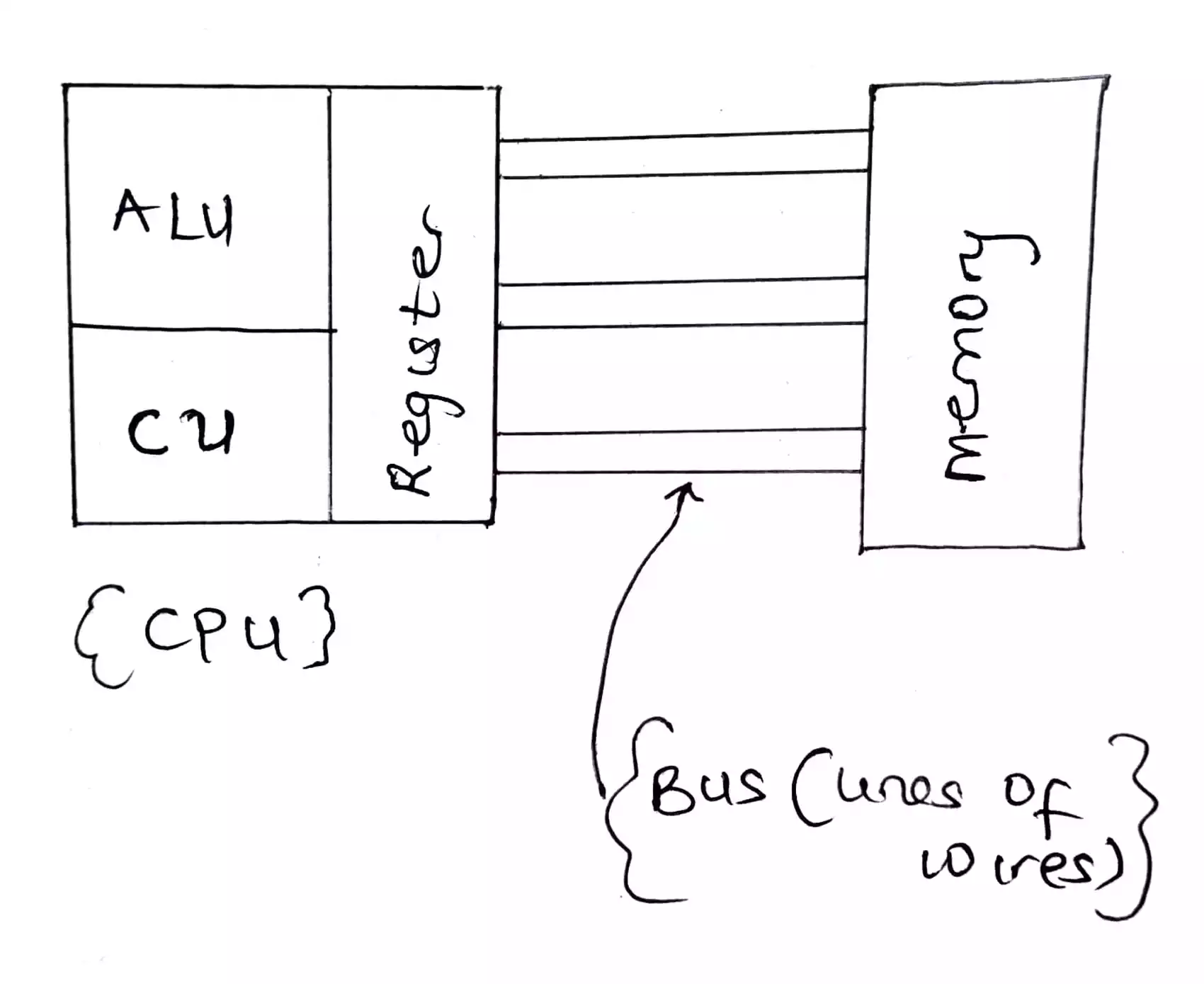Advantages and Disadvantages of Wired and Wireless Networks
Wired networks use physical cables like Ethernet cables to establish connections, ensuring reliable and secure communication.
They have a long-standing reputation for stability and high-speed data transfer. On the other hand, wireless networks utilize wireless signals, such as Wi-Fi, enabling us to connect devices without the need for physical cables.
These networks offer mobility and the freedom to access the internet and share data within the network’s coverage area.
Read on: Difference Between Wired and Wireless Networks With Examples
In this article, we’ll explore the advantages and disadvantages of wired and wireless networks.
Table of Contents
Wired Networks: Advantages and Disadvantages
Advantages of Wired Networks
Wired networks, also known as Ethernet networks, utilize physical cables to transmit data.
Here are some notable advantages of wired networks:
- Reliability: Wired networks offer a high level of reliability due to the stable physical connection.
Unlike wireless networks, which are susceptible to interference from various sources, wired networks provide consistent and uninterrupted connectivity. - Speed: Wired networks are renowned for their fast data transfer speeds.
With the advancements in Ethernet technology, it is common to achieve gigabit speeds, making wired networks ideal for applications that demand high bandwidth, such as streaming media and online gaming. - Security: Wired networks provide enhanced security compared to wireless networks.
Since the data is transmitted through physical cables, it is considerably more difficult for unauthorized individuals to intercept or access the information being transmitted. - Stability: Wired connections are less prone to fluctuations and signal degradation. This stability ensures a consistent and reliable connection, making wired networks preferable for critical operations and sensitive applications.
Disadvantages of Wired Networks
While wired networks offer numerous benefits, they also come with certain drawbacks. Let’s look into some of the disadvantages:
- Limited Mobility: One of the primary limitations of wired networks is the lack of mobility.
Since the devices need to be physically connected to the network through cables, it can restrict movement and flexibility, particularly in situations where mobility is crucial, such as in a large office or industrial environment. - Installation Complexity: Setting up a wired network can be more complicated and time-consuming compared to wireless networks.
It involves running cables through walls, floors, or ceilings, which may require professional assistance. Additionally, the presence of physical cables can make the network infrastructure less aesthetically pleasing. - Cost: Wired networks generally involve higher upfront costs due to the need for cables, switches, routers, and other hardware.
The cost of installation, maintenance, and cable management can also add up over time, especially for larger networks spanning multiple locations. - Vulnerability to Physical Damage: Since wired networks rely on physical cables, they are susceptible to damage caused by factors such as accidental cuts, environmental conditions, or equipment failure.
Any disruption in the cable infrastructure can result in loss of connectivity and downtime. - Scalability Challenges: Expanding or modifying a wired network can be more challenging compared to wireless networks.
Adding new devices or extending the network to new areas may require additional cabling and infrastructure adjustments, making scalability a potential issue.
Wireless Networks: Advantages and Disadvantages
Advantages of Wireless Networks
Wireless networks, also referred to as Wi-Fi networks, have gained significant popularity due to their convenience and flexibility.
Here are some advantages of wireless networks:
- Mobility: Wireless networks provide unparalleled mobility, allowing users to connect to the network without being physically tethered to a specific location.
This freedom enables users to access the network from various devices and locations within the network coverage area. - Ease of Installation: Setting up a wireless network is relatively easier compared to wired networks.
It eliminates the need for extensive cable installations, making it a convenient option for residential users, small businesses, or temporary setups. - Flexibility and Scalability: Wireless networks offer greater flexibility in terms of adding or removing devices.
Scaling a wireless network involves minimal infrastructure modifications, as long as the coverage area and access points are appropriately configured. - Convenience: Wireless networks enable seamless connectivity without the need for physical connections or cables.
Users can access the network from their devices with ease, providing convenience and eliminating the hassle of managing cables.
Disadvantages of Wireless Networks
Despite their convenience, wireless networks do have certain disadvantages. Let’s look into them in detail:
- Interference: Wireless networks are susceptible to interference from various sources, including other wireless devices, electronic appliances, or physical obstacles.
Interference can result in signal degradation, reduced throughput, or even complete loss of connectivity. - Signal Range Limitations: The coverage area of wireless networks is limited by the signal range of the access points.
Thick walls, long distances, or environmental factors can affect the signal strength and coverage, leading to dead zones or areas with poor network connectivity. - Security Risks: Wireless networks are inherently more vulnerable to security breaches compared to wired networks.
Without proper security measures in place, unauthorized individuals can intercept or access the wireless signals, potentially compromising sensitive information. - Speed and Bandwidth Constraints: While wireless technology has improved over the years, wired networks still offer superior speed and bandwidth capabilities.
Wireless networks may experience reduced speeds and limited bandwidth, especially when multiple devices are connected simultaneously. - Reliability Challenges: Wireless networks are more prone to reliability issues due to the potential for signal interference or signal loss caused by environmental factors.
Factors such as weather conditions, electromagnetic interference, or network congestion can impact the reliability of the wireless connection.
Wrap Up
Wired and wireless networks have their own distinct advantages and disadvantages. Wired networks stand out in terms of reliability, speed, and security, making them perfect for critical applications and situations where stability is paramount.
On the other hand, wireless networks offer unparalleled mobility, convenience, and ease of installation, catering to the needs of portable devices and flexible setups.
By comprehending the strengths and weaknesses of each network type, you can make informed decisions that align with your specific requirements.
Remember, the choice between wired and wireless networks is not always binary. In many cases, a combination of both networks can provide the best of both worlds.
Ultimately, the decision should be based on careful consideration of factors such as security, speed, scalability, and mobility, ensuring that your network infrastructure meets your present and future needs.
FAQs about Wired and Wireless Networks
- Can I have both wired and wireless networks in my setup? Indeed! Many setups incorporate a combination of wired and wireless networks. This approach allows you to take advantage of the reliability and speed of wired connections for stationary devices, while enjoying the mobility and convenience of wireless connectivity for portable devices.
- Which network is more secure: wired or wireless? Wired networks generally offer greater security due to the physical nature of the connections.
But, with proper security measures such as encryption protocols and strong passwords, wireless networks can also be secured effectively. - What is the future of wired and wireless networks? The future of networking is likely to be a hybrid approach, combining the best aspects of wired and wireless technologies.
Advancements in wireless technology, such as Wi-Fi 6 and 5G, aim to provide faster speeds, lower latency, and improved reliability, narrowing the gap between wired and wireless networks. - Can I convert a wired network into a wireless network? Yes, it is possible to convert a wired network into a wireless network by adding wireless access points or routers to the existing infrastructure.
This allows devices to connect to the network wirelessly while still utilizing the wired backbone for data transmission. - Are wired networks becoming obsolete? While the popularity of wireless networks continues to rise, wired networks remain a crucial component of infrastructure for many organizations.
Wired networks offer unparalleled reliability, security, and speed, making them indispensable in certain industries and applications. - Which network should I choose for my home or business? The choice between wired and wireless networks depends on your specific requirements, budget, and priorities.
Consider factors such as speed, security, mobility, and scalability to determine the most suitable network solution for your needs.




